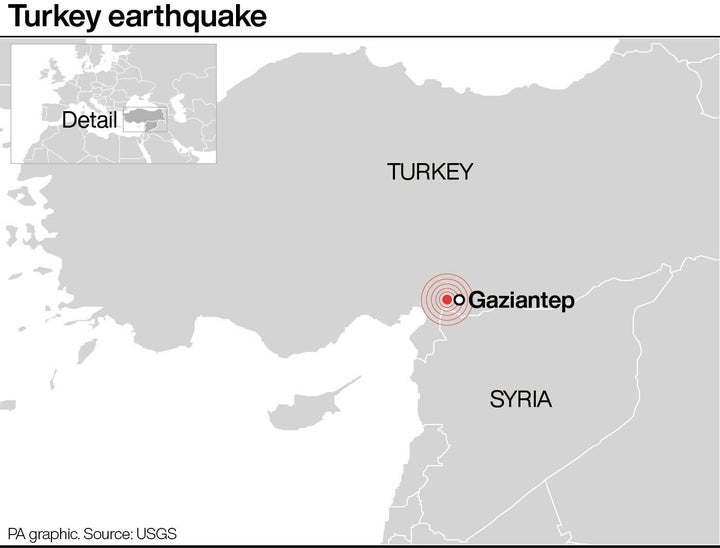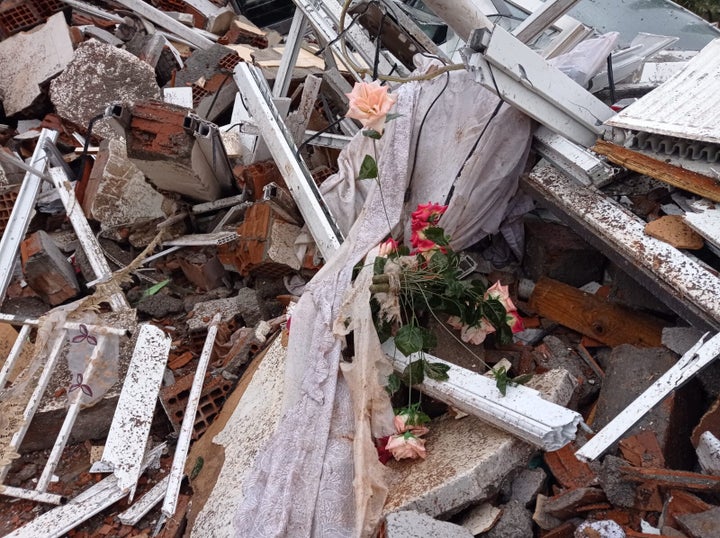
A series of earthquakes have devastated parts of Turkey and Syria, killing more than 3,000 people and toppling thousands of buildings.
The quakes, centred on Turkey’s south-eastern province of Kahramanmaras, were felt as far away as Cairo in Egypt and Beirut in Lebanon.
They hit a region that has been shaped on both sides of the border by more than a decade of civil war in Syria and the refugee crisis the conflict created.

What happened?
The magnitude 7.8 earthquake that struck Turkey and Syria on Monday is likely to be one of the deadliest this decade, seismologists said.
The epicentre was about 16 miles (26 km) east of the Turkish city of Nurdagi on the East Anatolian Fault. The quake radiated towards the northeast, bringing devastation to central Turkey and Syria.
Eleven minutes after the initial quake, the region was hit by a 6.7-magnitude aftershock. A 7.5-magnitude quake came hours later, followed by another 6.0 spasm in the afternoon.
On average, there are fewer than 20 quakes over 7.0 magnitude in any year, making Monday’s event severe.
Why was it so severe?
The intersection of three tectonic plates
The region is one of the world’s most seismically active, meaning it is prone to earthquakes.
Earthquakes happen when massive blocks of the earth’s crust – or tectonic plates – suddenly move past each other.
The region of Turkey and Syria is at the intersection of three of these plates: the Anatolian, Arabian and African plates.
The Arabian plate is pushing northwards into Europe, causing the Anatolian plate to be pushed westward at a rate of about 2cm per year.
It’s this stress, that has been accumulating for decades, that has now been released with fatal consequences.
A strike-slip fault
The East Anatolian Fault is a strike-slip fault. In those, solid rock plates are pushing up against each other across a vertical fault line, building stress until one finally slips in a horizontal motion, releasing a tremendous amount of strain that can trigger an earthquake.
The San Andreas Fault in California is perhaps the world’s most famous strike-slip fault, with scientists warning that a catastrophic quake is long overdue.
“The shaking at the ground surface will have been more severe than for a deeper earthquake of the same magnitude at source,” David Rothery, a planetary geoscientist at the Open University told Reuters.

The shallow quakes
The initial rupture for the Turkey-Syria earthquake struck at a relatively shallow depth of 11 miles (18km).
The second big quake, which followed nine hours later about 62 miles (100km) north-east of the original tremor, was at a depth of just 6 miles (10km).
Experts say the shaking at the ground surface will have been more severe than for a deeper earthquake of the same magnitude at source.
Quality of the buildings and location
Speculation will also surround the types of building that were destroyed in the disaster, especially in smaller towns and villages with fewer modern buildings.
Modern buildings following updated building codes have a good chance of surviving quakes. But older or cheaper structures are more vulnerable, and buildings may already have been damaged in areas ravaged by civil war.
